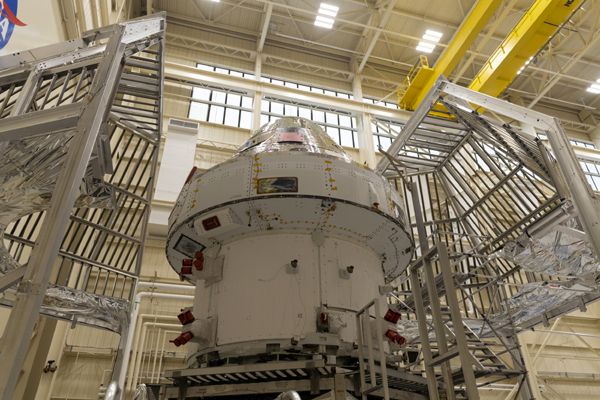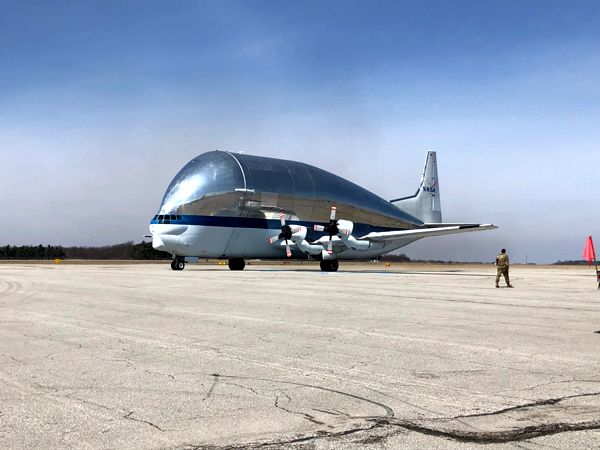
ESA – S. Corvaja
Last Stop Before Launch: Orion Passes Tests and Returns to Kennedy Space Center (Press Release)
The Orion spacecraft that will fly on the Artemis 1 mission around the Moon has returned to NASA’s Kennedy Space Center in Florida, USA, after finishing space environment tests. The spacecraft, including ESA’s European Service Module, is now at its final destination before launch.
Orion spent four months at NASA’s Plum Brook Station where it was subjected to the vacuum and temperatures of –175°C to 75°C it will experience on its flight to the Moon. After proving its space-worthiness, the electronics – including the thousands of parameters and functions of the European Service Module that control the engines, electrical power and steering the solar panels to face the Sun – were checked for electromagnetic interference.
ESA’s Dominique Siruguet from the European Service Module integration and verification team says “The tests were successful and the behaviour of the vehicle was good, passing all requirements.”
Plum Brook Station was chosen for the tests because thermal vacuum and electromagnetic compatibility could be performed in the same facility. This avoided additional transport of Orion, which is the size of a two-story house.
Having passed its trials, the spacecraft was wrapped and moved by truck to an airport in Ohio for its return flight on NASA’s Super Guppy aircraft.
Adding Wings to Orion
The tests are not completely over for Orion; at Kennedy Space Center the crew module will be further prepared and more leak tests conducted. The European Service Module has tanks for fuel, oxygen and water that are critical for the astronauts. The gas tanks are pressurised and are connected to many pipes and valves, so it is vital to make sure there are no leaks.
The solar wings that generate power during its mission will be installed, as well as protective covers called the Spacecraft Adapter Jettisoned fairings for the intense moments of launch on the world’s most powerful rocket.
Later this year ESA will formally transfer ownership of the European Service Module to NASA and the spacecraft will move into the ground system phase where it will be united with the SLS rocket for a lift-off to the Moon.
Orion is a key component of Artemis 1 – an uncrewed test flight around the Moon that paves the way for the Artemis 3 mission, which will land the first woman and next man on the lunar surface by 2024. ESA is designing and supplying the European Service Module for the Orion spacecraft. This provides electricity, water, oxygen and nitrogen. It also keeps the spacecraft at the right temperature and on course, propelling it to the Moon and back once it has separated from the launcher.
Source: European Space Agency
****

NASA – Nicole Smith

No comments:
Post a Comment